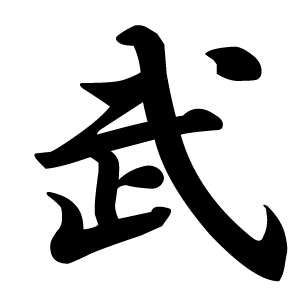Sometimes when tangling with my teachers and senior students I begin to forget the skill and soft power I have developed over the years. Then a new student comes to the school, and even if their reactions are a little unpredictable my technique cuts right through them.
Over at the kaze uta budi kai site, a police officer says most resistant arrests are as difficult randori with a green belt.
I found this next film. Besides being damn funny, it also shows how physically disorganized many people are. It takes a lot of practice to develop martial power. Looking at the following video is like going through my home movies over the years. Fortunately on this film I got some stunt men to stand in for me.
Sunday, August 30, 2009
Saturday, August 29, 2009
Thursday, August 27, 2009
All warfare is based on deception

"All warfare is based on deception. Hence, when able to attack, we must seem unable; when using our forces, we must seem inactive; when we are near, we must make the enemy believe we are far away; when far away, we must make him believe we are near. Hold out baits to entice the enemy. Feign disorder, and crush him."
- Sun Tzu, the Art of War
Besides being a martial artist, I am also a passionate magician. This quote makes me think of the mind bending power misdirection has, even in the martial arts. I can think of two examples using wrist turns, kote gaeshi

1. Your opponent is trying to put on a wrist turn technique (kote gaeshi) Usually all their energy and attention is focused on that one point, the lock. That one point becomes the misdirection. Let them have that battle. Flank them with your body attacking another point destabilizing them. This causes the wrist lock to become ineffective.
2. Your are attempting to do a kote gaeshi. Conditions are not perfect and the technique is not perfect. Your opponent feels the strain and battle and is trying to wiggle out and escape. All of his attention (ki) is in his wristand trying to escape. Continue to employ it, but use your other hand to begin establishing a connection somewhere else. Establish the battle line (wrist) use it as the deception. Flank the battle line and attack somewhere else while all his attention is on the wrist.
Tuesday, August 25, 2009
Redirecting Energy
I am very proud to announce we have a new contributing writer to the KyuRyu Aikibudo blog. Lately I have been trying to encourage the other guys at my dojo to start penning down some of their thoughts. Michael finally produced something, and it is very good. Someday soon I hope to spawn an entire dojo of writers, thinkers and philosophers on the path.
-Eric Pearson
KyuRyu AikiBudo

Redirecting Energy
Luckily real life is not an action adventure movie and we are able to walk though our daily life with few instances of ever needing to use our skill in Aikido. True Aikido practitioners perceive the world in a different light, noticing the subtle shifts in people bodies as they walk down a hall or change their balance to open a door or other seemingly mundane activities of day to day life. It is luckily rare that we ever have to draw upon our skills to actually intercede in a situation that may require us to make physical contact with somebody, allow them to break their own balance and have gravity take over. In the real world conflict is possibility never as clear cut as we see in the movies, two opposing army’s knowing that they are about to have a confrontation. Instead it is a subtle build up, then violence seems to explode out of it without any one exactly sure how it even escalated to such a point.
I was at work and was running back to my car to retrieve some paper work and right as I was about to exit the building a coworker grabbed me and asked me to make sure I walked out and witnessed what was seemingly about to happen. A nice older lady from work was being followed into the parking lot by another driver for at the time reason I didn’t know. Of course this was one of those little old ladies every offices has, and who couldn’t hurt a fly if she tried with all of her might. The man in the car had blocked her in a parking space and was honking his horn at her waving his fist and making every rude gesture you can think of. Knowing that something had to be done I calmly but deliberately walked straight towards the offending person’s car.

At points like this a thousand different thoughts roll through one’s mind. I need to help my friend especially one that cannot defend herself. Am I going to be in a physical conflict? Does this person have a gun; are they crazy, on drugs, just pissed off because of their morning commute or a fight they had with their wife? Just as important what are my actions going to be. Do I lose my temper and express my outrage to him, violently or verbally? As all of these thoughts washed over me in what seemed like a ten mile walk toward this person’s car. I thought back to my training and not just my training but the philosophy, concepts, and ideas that I have spent the last three years trying to cultivate and incorporate in my Aikido, and through it my daily life. My mind cleared and I suddenly found my calm just like as if I was in the dojo about to start randori or other practice. I made eye contact starting zanshin letting this guy know that I wasn’t going to tear him limb from limb but was also not going to allow him to pick on a much weaker friend and coworker.

As soon as the eye contact was made he realized immediately that his situation had changed. His aggression towards someone much weaker than him was unacceptable but it wasn’t that this was unacceptable it was also that he was wrong. Being able to change someone’s balance not just through touch but state of mind and informing them that their actions will not be tolerated is as powerful as any throw. If I had run out there at full speed and been the aggressor I believe in my heart that things would have escalated even further. As an Aikido artist there is the fine line between interceding in what could become a physical conflict and actually being the one that tips it into becoming a physical conflict. Tools such as zanshin (connectedness) and metsuke (gaze) allow us to control a situation without crossing the boundaries of physical contact.
Eye contact made, the driver got back in his car and drove off. Hopefully he reflects what it must be like to pick on a little old lady because they came to close to each other in a parking lot, something that was more than likely both their faults and not her fault or his. Hopefully he will take a couple of minutes and realize that it could have been a worst day for both of them and more importantly a better day for the both of them.

In today’s society where law officers become involved and coming to someone’s aid could get you arrested just as quickly or even be sued, using the mental principals of Aikido are just as important if not more useful. I have always believed that martial artist of all types have to be the ones with restraint, using their art as a last resort. It sometimes seems very contrary to even be practicing martial arts if you work to avoid a physical conflict. But alas, paradox is at the essence of budo.
-Michael Chihal
KyuRyu AikiBudo
-Eric Pearson
KyuRyu AikiBudo

Luckily real life is not an action adventure movie and we are able to walk though our daily life with few instances of ever needing to use our skill in Aikido. True Aikido practitioners perceive the world in a different light, noticing the subtle shifts in people bodies as they walk down a hall or change their balance to open a door or other seemingly mundane activities of day to day life. It is luckily rare that we ever have to draw upon our skills to actually intercede in a situation that may require us to make physical contact with somebody, allow them to break their own balance and have gravity take over. In the real world conflict is possibility never as clear cut as we see in the movies, two opposing army’s knowing that they are about to have a confrontation. Instead it is a subtle build up, then violence seems to explode out of it without any one exactly sure how it even escalated to such a point.
I was at work and was running back to my car to retrieve some paper work and right as I was about to exit the building a coworker grabbed me and asked me to make sure I walked out and witnessed what was seemingly about to happen. A nice older lady from work was being followed into the parking lot by another driver for at the time reason I didn’t know. Of course this was one of those little old ladies every offices has, and who couldn’t hurt a fly if she tried with all of her might. The man in the car had blocked her in a parking space and was honking his horn at her waving his fist and making every rude gesture you can think of. Knowing that something had to be done I calmly but deliberately walked straight towards the offending person’s car.

At points like this a thousand different thoughts roll through one’s mind. I need to help my friend especially one that cannot defend herself. Am I going to be in a physical conflict? Does this person have a gun; are they crazy, on drugs, just pissed off because of their morning commute or a fight they had with their wife? Just as important what are my actions going to be. Do I lose my temper and express my outrage to him, violently or verbally? As all of these thoughts washed over me in what seemed like a ten mile walk toward this person’s car. I thought back to my training and not just my training but the philosophy, concepts, and ideas that I have spent the last three years trying to cultivate and incorporate in my Aikido, and through it my daily life. My mind cleared and I suddenly found my calm just like as if I was in the dojo about to start randori or other practice. I made eye contact starting zanshin letting this guy know that I wasn’t going to tear him limb from limb but was also not going to allow him to pick on a much weaker friend and coworker.

As soon as the eye contact was made he realized immediately that his situation had changed. His aggression towards someone much weaker than him was unacceptable but it wasn’t that this was unacceptable it was also that he was wrong. Being able to change someone’s balance not just through touch but state of mind and informing them that their actions will not be tolerated is as powerful as any throw. If I had run out there at full speed and been the aggressor I believe in my heart that things would have escalated even further. As an Aikido artist there is the fine line between interceding in what could become a physical conflict and actually being the one that tips it into becoming a physical conflict. Tools such as zanshin (connectedness) and metsuke (gaze) allow us to control a situation without crossing the boundaries of physical contact.
Eye contact made, the driver got back in his car and drove off. Hopefully he reflects what it must be like to pick on a little old lady because they came to close to each other in a parking lot, something that was more than likely both their faults and not her fault or his. Hopefully he will take a couple of minutes and realize that it could have been a worst day for both of them and more importantly a better day for the both of them.

In today’s society where law officers become involved and coming to someone’s aid could get you arrested just as quickly or even be sued, using the mental principals of Aikido are just as important if not more useful. I have always believed that martial artist of all types have to be the ones with restraint, using their art as a last resort. It sometimes seems very contrary to even be practicing martial arts if you work to avoid a physical conflict. But alas, paradox is at the essence of budo.
-Michael Chihal
KyuRyu AikiBudo
Sunday, August 23, 2009
Hussey Invasion
I had never heard of blogs, until Formosa Neija put one of my videos up. Then I started getting the Mokuren site every time I did a search for budo related information.
I decided to start blogging as a New Year's resolution. Another resolution I had was to be open to more teachers. I wrote Lowry Sensei on a whim after reading an interview. Lowery Sensei suggested Matl Sensei, and Matl Sensei pushed me to Hussey Sensei.
So Hussey Sensei is a great friend and artist. He came down yesterday from Round Rock martial arts, and corrupted our students with his ideas. He has never seen himself on film doing aikido, so I finally talked him into doing a few minutes of randori with me with the camera rolling. I am the attacker, but I am trying to counter and give him problems the whole time. I even grabbed his legs while falling, and I tried to pull him down with me every chance I got. I got him once! Needless to say, he pretty much effortlessly put me on the floor. I was overheating pretty bad, so you can watch me turn an amazing red by the end of the session.
Here he demonstrates quite a few positional corner drops, like I was trying to describe on yesterdays blog "waves crashing over rocks."
Round Rock Martial Arts
I decided to start blogging as a New Year's resolution. Another resolution I had was to be open to more teachers. I wrote Lowry Sensei on a whim after reading an interview. Lowery Sensei suggested Matl Sensei, and Matl Sensei pushed me to Hussey Sensei.
So Hussey Sensei is a great friend and artist. He came down yesterday from Round Rock martial arts, and corrupted our students with his ideas. He has never seen himself on film doing aikido, so I finally talked him into doing a few minutes of randori with me with the camera rolling. I am the attacker, but I am trying to counter and give him problems the whole time. I even grabbed his legs while falling, and I tried to pull him down with me every chance I got. I got him once! Needless to say, he pretty much effortlessly put me on the floor. I was overheating pretty bad, so you can watch me turn an amazing red by the end of the session.
Here he demonstrates quite a few positional corner drops, like I was trying to describe on yesterdays blog "waves crashing over rocks."
Round Rock Martial Arts
Saturday, August 22, 2009
Waves crashing on rocks
I am amazed at how common the symbol of the wave is in Aikido. The wave is an expression of energy. Usually I see myself as the wave, rising and falling. I try to feel like liquid energy.
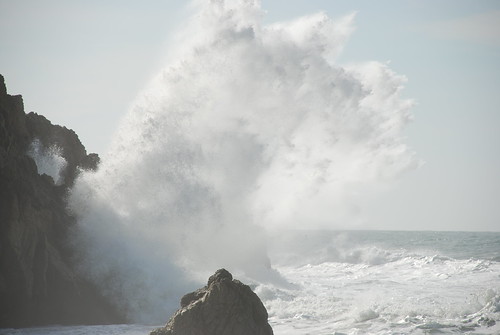
This morning I was meditating on the KyuRyu wave symbol. I began to see the attacker as the wave. He is the energy. But how do waves break? He energy of a wave breaks on rocks.
I found this clip of Henry Kono Sensei. He is doing a oshi taioshi / ikkyo motion. The thing I found interesting was he manipulated the relationship in a way that when the technique was executed the energy is coming onto him, but he is in the perfect place. He is like a rock, an the wave's energy harmless disperses on him.
Henry Kono
At the moment of execution he is not pushing and struggling to execute. He simply is there, like a rock. The off balanced 'wave' attacker is spun in a collision course. The relationship has been set. In these circumstances, rock beats wave.
Seeing models like this can be a very personal way to break down what we are trying to achieve in the arts. Today I am having hard time describing using words. I hope you can see what I am trying to communicate in the film.
Attention bloggers!!!
I found a cool way to get you tube to start a video at a particular time, like in the Kono video. After the link url write #t=__m__s. The blanks are the times you write in. So the code on the Kono video if you want to go to 5 mins and 50 seconds into the video looks like this-
http://www.youtube.com/watch?v=Y2HOhUklpwY#t=5m50s
I have not figured out how to embed the video yet with this time feature.

This morning I was meditating on the KyuRyu wave symbol. I began to see the attacker as the wave. He is the energy. But how do waves break? He energy of a wave breaks on rocks.
I found this clip of Henry Kono Sensei. He is doing a oshi taioshi / ikkyo motion. The thing I found interesting was he manipulated the relationship in a way that when the technique was executed the energy is coming onto him, but he is in the perfect place. He is like a rock, an the wave's energy harmless disperses on him.
Henry Kono
At the moment of execution he is not pushing and struggling to execute. He simply is there, like a rock. The off balanced 'wave' attacker is spun in a collision course. The relationship has been set. In these circumstances, rock beats wave.
Seeing models like this can be a very personal way to break down what we are trying to achieve in the arts. Today I am having hard time describing using words. I hope you can see what I am trying to communicate in the film.
Attention bloggers!!!
I found a cool way to get you tube to start a video at a particular time, like in the Kono video. After the link url write #t=__m__s. The blanks are the times you write in. So the code on the Kono video if you want to go to 5 mins and 50 seconds into the video looks like this-
http://www.youtube.com/watch?v=Y2HOhUklpwY#t=5m50s
I have not figured out how to embed the video yet with this time feature.
Tuesday, August 18, 2009
I am Budoka
I am a martial artist. In Japanese you might say, I am a budoka.
I am budoka. This makes me a scientist in the most difficult of sciences. To study the martial arts is to study physics, kinesology, biology, psychology, anthropology, chemistry and the myriad of science disciplines. The dojo is laboratory, class room and university were we study the science of the great masters that have come before us. Then as we grow in skill we become the professors, spending our late nights pondering the equations that will take our noble science in the next generation. The artist studies deep cause and effect relationships and continually searches for more sophisticated models to explain the intricate dance of conflict.

I am a budoka. To study the martial arts makes a philosopher. Philosophy is the study of general and fundamental problems concerning matters such as existence, knowledge, truth, beauty, law, justice, validity, mind, and language. The martial philosopher pontificates on ethics and force. The martial mind turns to justice and law. We meditate on honor and learn to live harmoniously with an art that grants us great powers. To practice the arts is to study the living embodiment of philosophy.
I am a budoka, the arts that are the forge of the mystic. For the deep student the arts become the pursuit of communion with, identity with, or conscious awareness of an ultimate reality, divinity, spiritual truth, or God through direct experience, intuition, or insight. The arts become a tool, a model, a regular practice, a prayer, and a constant challenge to our connection with our sense of mystery. We wear foreign monastic clothing, wield ancient weaponry, and build temples to our art. We deeply study spiritual phrases in foreign tongues to help us understand...whatever it is we seek.

I am a budoka. I study arts within arts. I study movement arts, speaking arts, the art of teaching. I have learned the interior design of dojos, and carpentry to build them. I have learned to write the Japanese symbols with a brush, a deep study line and balance. The Zen aesthetic infuses the budokas collective psyche and I have learned to have reverence of the infinite complexity in simplicity. Even this humble text I am writing here is an art form developed because of my passion for the grand art form that is budo.

I am a budoka. I seek to learn, to share, to challenge and to innovate. I wish to harness the sciences to build an ever deeping philosophy. This philosophy will be expressed in my art and relationships. I continue to study to gain a deeper understanding of the 'Do', or spiritual path that we walk. By walking a spiritual path I have gained the ability that is truly divine - to create art. Art is creation for creations sake, which is truly a divine act. I feel by drawing closer to the divine, we do what the great teachers intended us to do all along.

Walk In Peace,
Eric
I am budoka. This makes me a scientist in the most difficult of sciences. To study the martial arts is to study physics, kinesology, biology, psychology, anthropology, chemistry and the myriad of science disciplines. The dojo is laboratory, class room and university were we study the science of the great masters that have come before us. Then as we grow in skill we become the professors, spending our late nights pondering the equations that will take our noble science in the next generation. The artist studies deep cause and effect relationships and continually searches for more sophisticated models to explain the intricate dance of conflict.

I am a budoka. To study the martial arts makes a philosopher. Philosophy is the study of general and fundamental problems concerning matters such as existence, knowledge, truth, beauty, law, justice, validity, mind, and language. The martial philosopher pontificates on ethics and force. The martial mind turns to justice and law. We meditate on honor and learn to live harmoniously with an art that grants us great powers. To practice the arts is to study the living embodiment of philosophy.
I am a budoka, the arts that are the forge of the mystic. For the deep student the arts become the pursuit of communion with, identity with, or conscious awareness of an ultimate reality, divinity, spiritual truth, or God through direct experience, intuition, or insight. The arts become a tool, a model, a regular practice, a prayer, and a constant challenge to our connection with our sense of mystery. We wear foreign monastic clothing, wield ancient weaponry, and build temples to our art. We deeply study spiritual phrases in foreign tongues to help us understand...whatever it is we seek.

I am a budoka. I study arts within arts. I study movement arts, speaking arts, the art of teaching. I have learned the interior design of dojos, and carpentry to build them. I have learned to write the Japanese symbols with a brush, a deep study line and balance. The Zen aesthetic infuses the budokas collective psyche and I have learned to have reverence of the infinite complexity in simplicity. Even this humble text I am writing here is an art form developed because of my passion for the grand art form that is budo.

I am a budoka. I seek to learn, to share, to challenge and to innovate. I wish to harness the sciences to build an ever deeping philosophy. This philosophy will be expressed in my art and relationships. I continue to study to gain a deeper understanding of the 'Do', or spiritual path that we walk. By walking a spiritual path I have gained the ability that is truly divine - to create art. Art is creation for creations sake, which is truly a divine act. I feel by drawing closer to the divine, we do what the great teachers intended us to do all along.

Walk In Peace,
Eric
Sunday, August 16, 2009
A criticism of attacks in training
Occasionally here at KyuRyu, I find a video that I feel is worth pointing out some training methodologies that I disagree with. I do not mean it as an attack on the artists or their art. I do feel is imperative we constantly look at our practices with the upmost of critical eyes. I give my sincerest thanks to the gentlemen in this video for sticking their necks out to let others learn from them. I offer up any of my videos for people to pull apart too, I have made some with some bad practice exposed. Such is the process of learning.
These gentlemen are going through the motions of their system's kata. They are relaxed, and practicing fitting in, so they are not taking falls. It is a little lazy, but I do that too.
I have two major criticisms of this video - constant distance testing, and an attack coming from a fully extended position from too far away.
(edit) It appears that they blocked having the video embedded.
CLICK HERE FOR VIDEO
In recent years I have seen some aikido organizations move to an ever increasing more contrived system of attack, or really uke delivering energy so technique can be made.
Let's look at the video. What do we see first as the two artists come together? They measure ma-ai, or their engagement distance. They both stick their arms out to make sure they are playing at the correct distance.
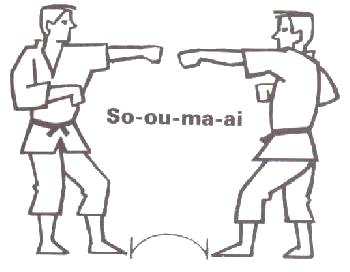
Measuring ma-ai is fine every once in a while if your distance calibration is off. I strongly disagree with doing it EVERY TIME during practice after an artist reaches gokyu level. This is beginner level stuff. Rather than having to measure distance an artist should have range so ingrained into their heads they naturally move to correct ma-ai every time. These gentlemen appear to be high level artists, so really they already know ma-ai, they are just going through a dance of needless motions. Checking ma-ai every time makes practice too easy and robs the student of the most important practice that aikido training should give - a natural and automatic use of space.

The next piece of technical criticism I would like to give this practice demonstration comes right after they check for ma-ai. The Uke, or attacker, leaves his arm out. The arm is already fully extended in an attack at the range of ma-ai. This is contrived and unrealistic. When someone wishes to strike something they do not first extend their arms - then move to break space. Really the way it happens is first an attacker must break space, then the strike is initiated. By practicing the way they are doing it, they are putting artificial, non-realistic parameters on their engagement. They are able to connect to a fully extended arm far earlier then they would actually be able to ever do with a real attacker.
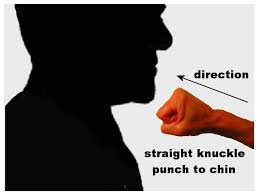
When a real strike truly comes in, it will coming from a very different, and often unpredictable angle. The first motion the tori does in the film is a cross body balance break. It is very easy to perform this balance break with a static, unmoving arm traveling down one line from a great distance. Almost no attack a human being does to another will replicate these circumstances. I find these method of attack to be over simplified to the point of uselessness. When one of my Senseis first saw this, he called it a "dumb downed" attack. At my dojo we call it the zombie attack, denoting the rigid arms out motion of it.
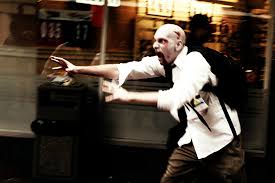
In conclusion, we must train with safe, yet realistic attacks or we will start building system of false cause and effect relationships and body dynamics. Built into our system of attacks we must train our minds to process space quickly effectively and automatically. If we over simplify the training, we begin a process of robbing ourselves of the critical skills we most need to develop. Having automatic spacing and learning to intercept an arm appropriately are some of these critical skills.
Once again, a heart felt thank you to the fellows I am doing the technical criticism of. I am sure they are wonderful artists, and could probably kick my butt.
These gentlemen are going through the motions of their system's kata. They are relaxed, and practicing fitting in, so they are not taking falls. It is a little lazy, but I do that too.
I have two major criticisms of this video - constant distance testing, and an attack coming from a fully extended position from too far away.
(edit) It appears that they blocked having the video embedded.
CLICK HERE FOR VIDEO
In recent years I have seen some aikido organizations move to an ever increasing more contrived system of attack, or really uke delivering energy so technique can be made.
Let's look at the video. What do we see first as the two artists come together? They measure ma-ai, or their engagement distance. They both stick their arms out to make sure they are playing at the correct distance.

Measuring ma-ai is fine every once in a while if your distance calibration is off. I strongly disagree with doing it EVERY TIME during practice after an artist reaches gokyu level. This is beginner level stuff. Rather than having to measure distance an artist should have range so ingrained into their heads they naturally move to correct ma-ai every time. These gentlemen appear to be high level artists, so really they already know ma-ai, they are just going through a dance of needless motions. Checking ma-ai every time makes practice too easy and robs the student of the most important practice that aikido training should give - a natural and automatic use of space.

The next piece of technical criticism I would like to give this practice demonstration comes right after they check for ma-ai. The Uke, or attacker, leaves his arm out. The arm is already fully extended in an attack at the range of ma-ai. This is contrived and unrealistic. When someone wishes to strike something they do not first extend their arms - then move to break space. Really the way it happens is first an attacker must break space, then the strike is initiated. By practicing the way they are doing it, they are putting artificial, non-realistic parameters on their engagement. They are able to connect to a fully extended arm far earlier then they would actually be able to ever do with a real attacker.

When a real strike truly comes in, it will coming from a very different, and often unpredictable angle. The first motion the tori does in the film is a cross body balance break. It is very easy to perform this balance break with a static, unmoving arm traveling down one line from a great distance. Almost no attack a human being does to another will replicate these circumstances. I find these method of attack to be over simplified to the point of uselessness. When one of my Senseis first saw this, he called it a "dumb downed" attack. At my dojo we call it the zombie attack, denoting the rigid arms out motion of it.

In conclusion, we must train with safe, yet realistic attacks or we will start building system of false cause and effect relationships and body dynamics. Built into our system of attacks we must train our minds to process space quickly effectively and automatically. If we over simplify the training, we begin a process of robbing ourselves of the critical skills we most need to develop. Having automatic spacing and learning to intercept an arm appropriately are some of these critical skills.
Once again, a heart felt thank you to the fellows I am doing the technical criticism of. I am sure they are wonderful artists, and could probably kick my butt.
Thursday, August 13, 2009
Sci Fi martial arts training devices
So tinkering and work outs continue on my aiki wooden dummy. It has got me thinking about all the cool martial arts training aids that have been presented in film.
In this scene in Star Wars we find Luke getting his first lesson on the Force with a training drone. As a child this scene was probably the first time I found the spiritual/martial buzz that I have been chasing my entire life.
In the movie Dune, we see Paul Atreides training in the weirding martial arts. He has a neat training dummy that shoots out spikes and has bladed arms.

In the recent animated movie Kung Fu panda, the furious five have a pretty cool training room. Sadly i was unable to locate a picture of it, but here is a picture with the Panda training with an inflatable dummy.

Now the Xmen have the most advanced training room in the comic world. The famed danger room. This is really the tops of personal training devices. It employs interactive holographic technology. Careful though, turn it up too high and it gets deadly.
Danger Room
In Star Trek the next generation we see the holodeck. Effectively this is exactly like the x-men's danger room with holographic interaction.
Holodeck
Going low tech, yet fancy we see the Kung Fu classic 36th chamber of Shaolin. They have all kinds of fancy training rooms, each targeted to develop a particular skill or physically develop a body part. This film fried me in pure awesomeness when I was a youngin'.
In this scene in Star Wars we find Luke getting his first lesson on the Force with a training drone. As a child this scene was probably the first time I found the spiritual/martial buzz that I have been chasing my entire life.
In the movie Dune, we see Paul Atreides training in the weirding martial arts. He has a neat training dummy that shoots out spikes and has bladed arms.

In the recent animated movie Kung Fu panda, the furious five have a pretty cool training room. Sadly i was unable to locate a picture of it, but here is a picture with the Panda training with an inflatable dummy.

Now the Xmen have the most advanced training room in the comic world. The famed danger room. This is really the tops of personal training devices. It employs interactive holographic technology. Careful though, turn it up too high and it gets deadly.
Danger Room
In Star Trek the next generation we see the holodeck. Effectively this is exactly like the x-men's danger room with holographic interaction.
Holodeck
Going low tech, yet fancy we see the Kung Fu classic 36th chamber of Shaolin. They have all kinds of fancy training rooms, each targeted to develop a particular skill or physically develop a body part. This film fried me in pure awesomeness when I was a youngin'.
Wednesday, August 12, 2009
Japanese Dan/Kyu System in the arts.
 |
| Honinbo Dosaku |
The rank system comprises, from the lowest to highest ranks:
Rank Type Range Stage
Double-digit kyu 30–20k Beginner
Double-digit kyu 20–10k Casual Player
Single-digit kyu 9–1k Intermediate Player
Amateur dan 1–7d Expert Player
Professional dan 1–9p Professionals
Other competitive games using the Dan/Kyu system are Shogi (Japanese Chess), Renju (Connect Five)
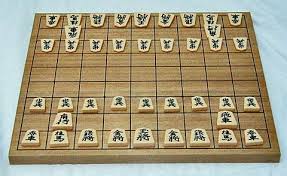
[1]Later the Japanese public schools were using the Kyu / Dan system as a means to rank ability throughout the different athletic departments. These departments were using belts or ribbons to identify ranking ability, most notably within swimming, where advanced swimmers wore a black ribbon around their waist to separate them from beginners in swimming tournaments.

Many other areas of Japanese culture had also adopted this system, i.e. Sado (Tea Ceremony), Ikebana (Flower Arranging), abucus culculation and (shodo)Calligraphy. There are even dans awarded for skill in sake (rice wine) tasting.
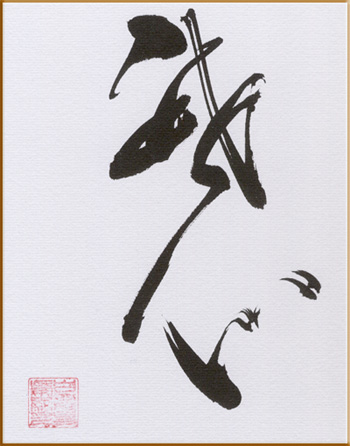
1600s (late) kyu/dan grading system started with Go, a game.
1883 - Judo instututes dan system - first shodan
1885 - kendo, Tokyo Metropolitan Police Department uses kyu system
1907 - Judo institutes black belt system
1908 - kendo, the Tokyo Higher Normal School first used dan
1917 - Kyu/Dan system stanardized in Kendo
1924 - Karate's first black belts
1931 - Aikido adopts dan system
1935 - colored belts in judo
Tuesday, August 11, 2009
Japanese Kyu / Dan Rank system
Let's start at the beginning of the modern system. (there is a older system)
The dan ranking system was invented by Honinbo Dosaku, professional go player in the Edo period.[2] Prior to the invention, top-to-bottom ranking was evaluated by each handicaps and tended to be vague. He valued then highest title holder, Meijin at 9 Dan.
 |
| Honinbo Dosaku |

Dan ranks were applied to martial arts by Kano Jigoro, the founder of judo. Kano started the modern rank system when he awarded shodan (the lowest dan rank) to two of his senior students (Shiro Saigo and Tsunejiro Tomita) in 1883. Even then, there was no external differentiation between yūdansha (black belt ranks) and mudansha (those who had not yet attained a grade). Kano began the custom of having his yūdansha wear black obi (belts) in 1886. These obi were not the belts karateka and jūdōka wear today—Kano had not invented the jūdōgi (judo uniform) yet, and his students were still practicing in kimono. They wore the wide obi still worn with formal kimono. In 1907, Kano introduced the modern jūdōgi and its modern obi, with white and black belt ranks.
 |
| Mikonosuke Kawaishi |
Mikonosuke Kawaishi is generally regarded as the first to introduce various colored belts in Europe in 1935 when he started to teach Judo in Paris. He felt that western students would show greater progress if they had a visible system of many colored belts recognizing achievement and providing regular incentives. This system included white, yellow, orange, green, blue, and purple belts before the traditional brown and black belts.
The modern ranking system
English Japanese
6th grade rokyu
5th grade gokyu
4th grade yonkyu
3rd grade sankyu
2nd grade nikyu
1st grade ikkyu
1st degree shodan
2nd degree nidan
3rd degree sandan
4th degree yodan
5th degree godan
6th degree rokudan
7th degree shichidan
8th degree hachidan
9th degree kudan
10th degree judan
Theoretically the Judo rank system is not limited to 10 degrees of black belt. The original english language copy (1955) of Illustrated Kodokan Judo, by Jigoro Kano, says: "There is no limit...on the grade one can receive. Therefore if one does reach a stage above 10th dan... there is no reason why he should not be promoted to 11th dan." However, since there has never been any promotion to a rank above 10th dan, the Kodokan Judo promotion system effectively has only 10 dans. There have only been 15 10th dans awarded by the Kodokan in the history of Judo.
The Judo practice uniform and belt system eventually spread to many of the other modern martial arts, such as aikido and karate.
1600s (late) kyu/dan grading system started with Go, a game.
1883 - Judo instututes dan system - first shodan
1885 - kendo, Tokyo Metropolitan Police Department uses kyu system
1907 - Judo institutes black belt system
1908 - kendo, the Tokyo Higher Normal School first used dan
1917 - Kyu/Dan system stanardized in Kendo
1924 - Karate's first black belts
1931 - Aikido adopts dan system
1935 - colored belts in judo
Much of this blog was taken from...


